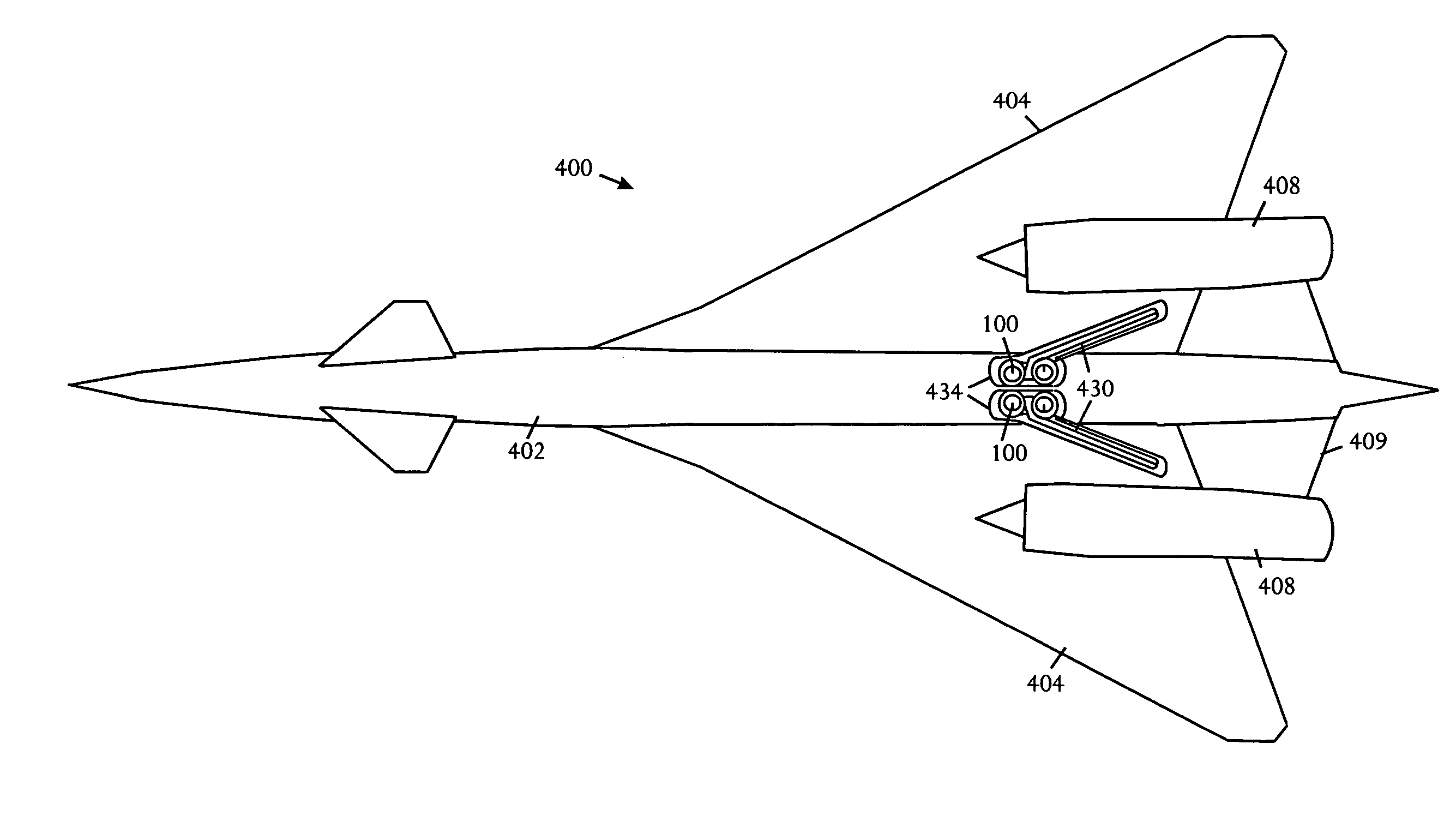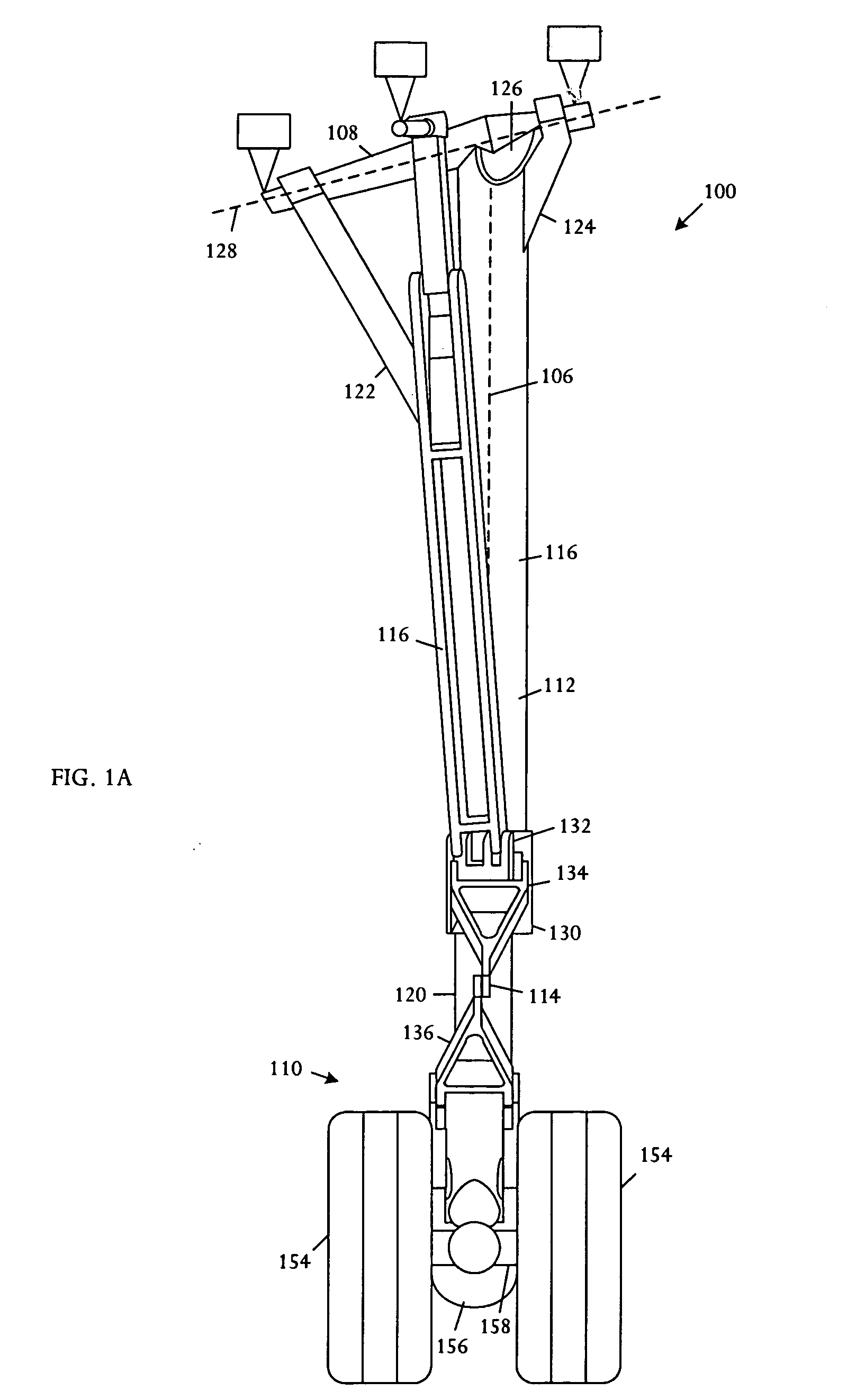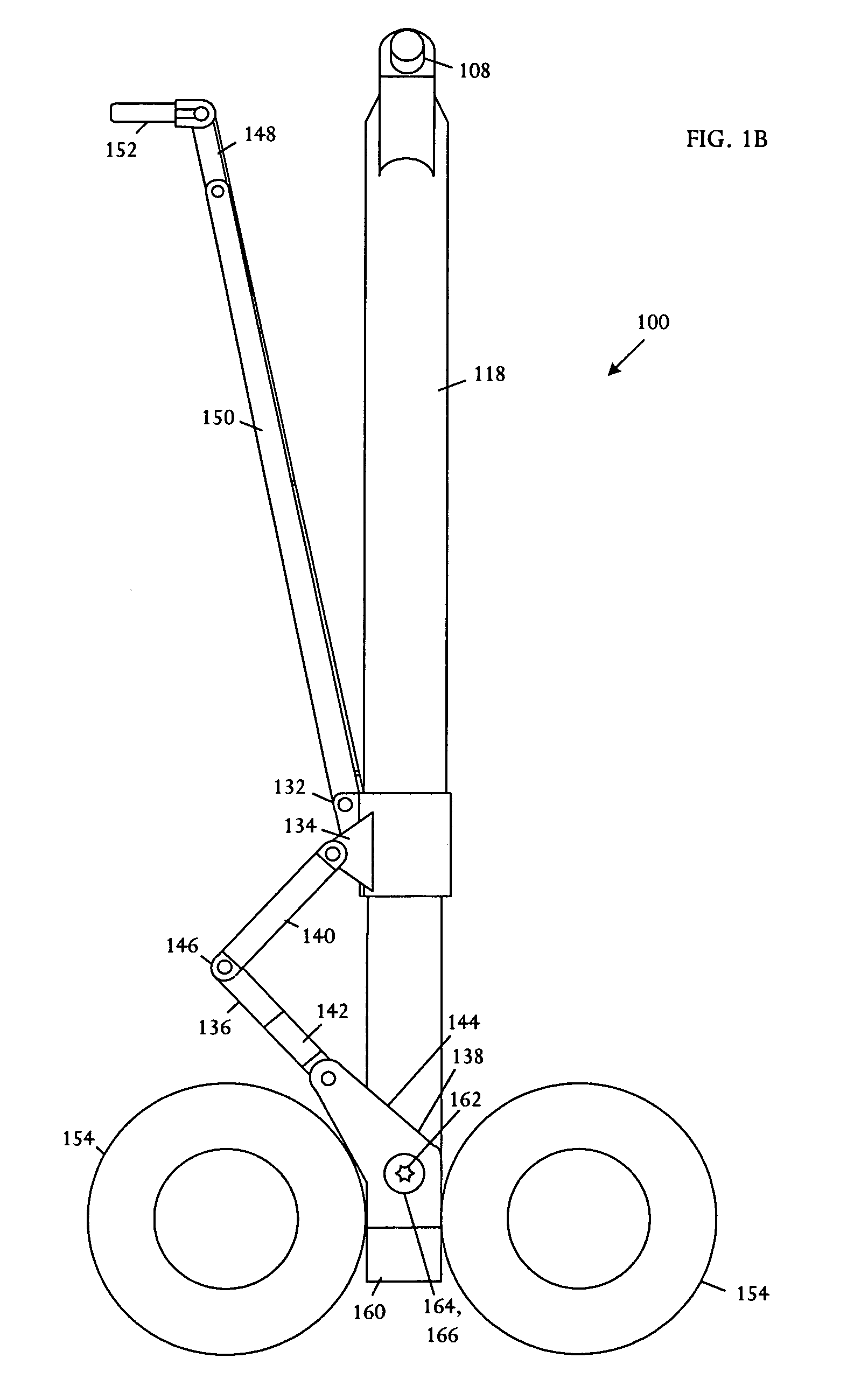Forward inboard retracting main landing gear
a landing gear and forward technology, applied in the direction of landing gear, transportation and packaging, undercarriage, etc., can solve the problems of increasing wing sweep, reducing space available, and introducing folding linkages and hinges as points of failure, so as to reduce storage volume, avoid interference between landing gear and surrounding structures, and simple landing gear
- Summary
- Abstract
- Description
- Claims
- Application Information
AI Technical Summary
Benefits of technology
Problems solved by technology
Method used
Image
Examples
Embodiment Construction
[0024]Referring to FIGS. 1A, 1B, and 1C, schematic pictorial diagrams show front, side, and top views of an extended main landing gear 100. FIGS. 2A, 2B, and 2C show respective front, side, and plan views of the main landing gear 100 when retracted. The illustrative main landing gear 100 comprises a four-wheel truck 110, a shock strut 112, a collar / scissor link assembly 114, and a drag strut assembly 116. The shock strut 112 is substantially straight; having no folding structures, shrink linkages, or hinges that would otherwise be used to shorten the strut upon retraction. By eliminating structures that shorten the strut on retraction, the main landing gear 100 minimizes or reduces the risk that the landing gear will fail to extend.
[0025]The shock strut 112 is a nonfolding, nonhinged structure, having a length that is essentially fixed throughout the retraction and extension cycle. The shock strut 112 further comprises collinear telescoping inner 120 and outer 118 cylinders, and lat...
PUM
 Login to View More
Login to View More Abstract
Description
Claims
Application Information
 Login to View More
Login to View More - R&D
- Intellectual Property
- Life Sciences
- Materials
- Tech Scout
- Unparalleled Data Quality
- Higher Quality Content
- 60% Fewer Hallucinations
Browse by: Latest US Patents, China's latest patents, Technical Efficacy Thesaurus, Application Domain, Technology Topic, Popular Technical Reports.
© 2025 PatSnap. All rights reserved.Legal|Privacy policy|Modern Slavery Act Transparency Statement|Sitemap|About US| Contact US: help@patsnap.com



